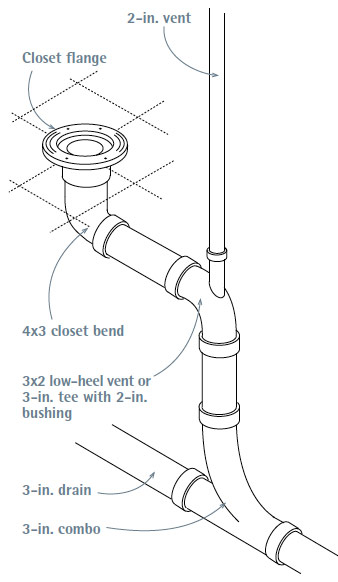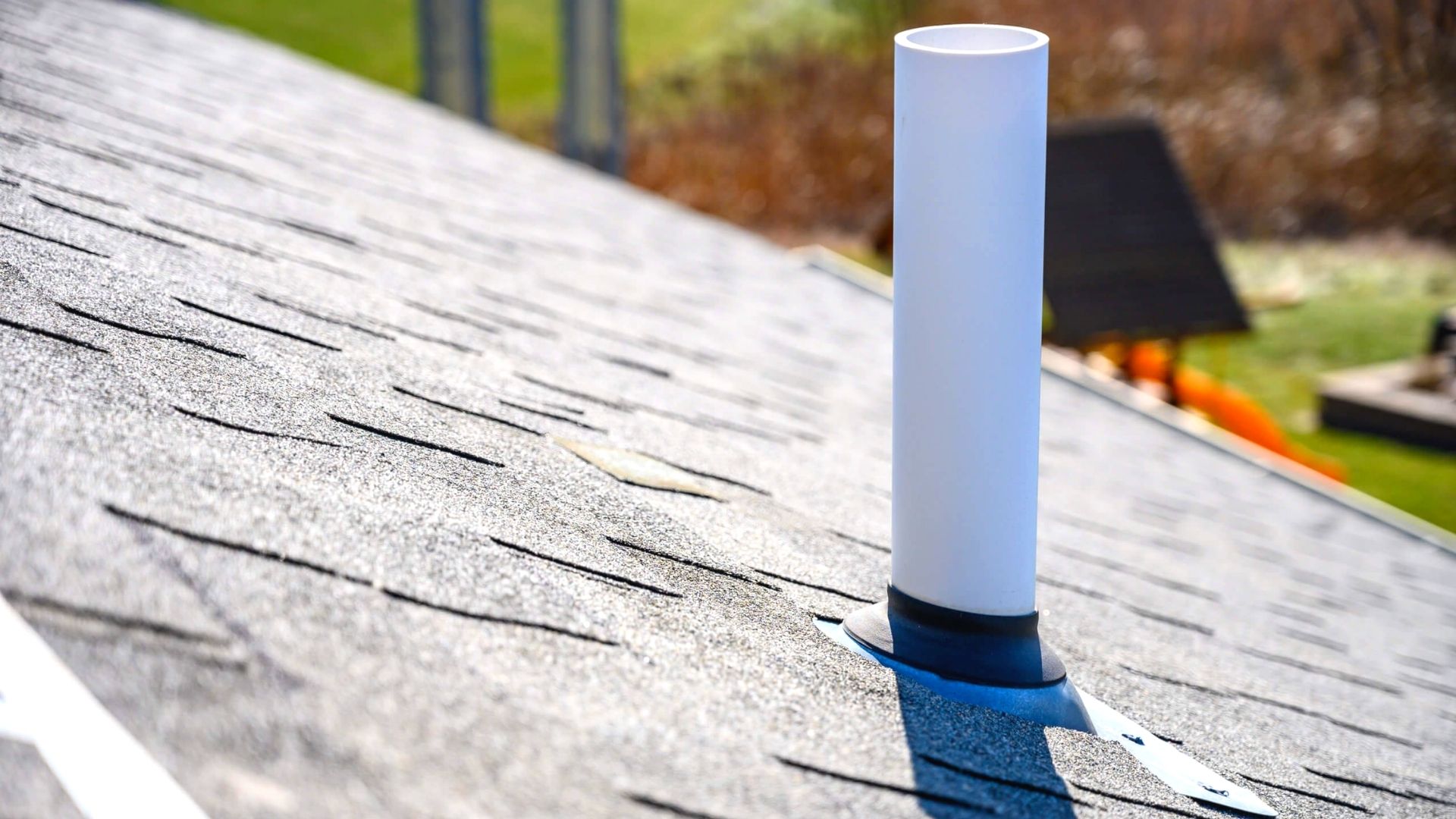The writer is making several good observations relating to What Is a Plumbing Vent and Why Is It Important as a whole in this post on the next paragraphs.

Correct air flow in pipes systems is often ignored, yet it is important for preserving the performance and safety of your home's pipes. Ventilation assists manage air pressure, avoid the buildup of dangerous gases, and ensure the reliable elimination of waste. In this overview, we will explore the value of correct pipes ventilation, exactly how it works, and the advantages it gives your plumbing system.
Exactly How Air Flow Works in Pipes Solutions
Air Pressure Law
Appropriate air flow preserves well balanced air pressure within the pipes system. When water flows with pipelines, it displaces air. Without ample ventilation, this displacement can develop adverse pressure, leading to slow drains pipes or siphoning of water from catches, which can create undesirable odors to leak into the home.
Stopping Sewage System Gas Accumulation
Among the most critical functions of pipes vents is to stop sewage system gases, such as methane and hydrogen sulfide, from gathering within the home. These gases can position serious wellness threats and are highly flammable. Vent pipes permit these gases to escape securely outdoors.
Aiding in Waste Elimination
Ventilation aids in the efficient elimination of wastewater by preventing airlocks in the water drainage system. When air can stream freely via the vents, it enables water and waste to flow smoothly via the pipes, reducing the danger of obstructions and backups.
Advantages of Proper Air Flow
Enhanced System Performance
Appropriately ventilated pipes systems operate a lot more successfully, with fewer clogs, faster draining, and less stress on the pipes. This performance expands the life-span of the pipes system.
Improved Air Top Quality
By avoiding sewer gases from entering your home, correct ventilation adds to better indoor air high quality, making your living atmosphere healthier and extra comfortable.
Preventing Water Damage
Sufficient ventilation aids prevent water from being siphoned out of catches, which can result in sewage system gases getting in the home and causing water damages in time.
Steps to Make Sure Correct Ventilation
Consulting Pipes Codes
Constantly seek advice from local plumbing codes when making or customizing your pipes system. These codes supply the required standards for appropriate airing vent and ensure your system satisfies safety and security requirements.
Regular Inspection and Maintenance
Regular examinations can help recognize possible ventilation issues before they come to be significant issues. Upkeep jobs, such as cleaning air vent pipelines and checking for blockages, are crucial for keeping the system in good working order.
Specialist Setup
For brand-new installations or significant modifications, it's smart to work with a specialist plumbing technician. They have the expertise to ensure the ventilation system is appropriately designed and installed according to code.
Understanding Ventilation in Plumbing
Air flow in pipes describes the network of pipes that allow air to move through the drainage system. These vents serve several functions, including managing atmospheric pressure within the pipelines, protecting against sewer gases from going into the home, and helping in the smooth flow of wastewater.
Types of Pipes Vents
Key Stack Vent
The main pile air vent, also known as the air vent stack, is the main vent in a pipes system. It expands from the major drain align with the roofing system, allowing gases to get away and fresh air to get in the system.
Branch Vent
Branch vents connect to the primary pile air vent and offer individual fixtures, such as sinks, bathrooms, and showers. These vents make certain that each component has adequate ventilation to function appropriately.
Air Admission Shutoff (AAV).
An Air Admission Shutoff (AAV) is a one-way shutoff that permits air to enter the plumbing system without the need for a traditional air vent pipe extending with the roof covering. AAVs are commonly used in improvements or areas where mounting a common vent is impractical.
Indications of Poor Ventilation in Pipes.
Slow Draining Fixtures.
If your sinks, bathtubs, or bathrooms are draining slowly, maybe an indication of bad ventilation. Inadequate air flow can produce a vacuum effect, making it tough for water to drain pipes properly.
Gurgling Sounds.
Gurgling sounds originating from drains pipes are typically an outcome of air being drawn via water traps due to negative pressure in the pipes. This is a clear indication of insufficient ventilation.
Unpleasant Odors.
Sewer odors inside your home are a warning that your plumbing system is not properly aerated. This could suggest that sewage system gases are not being properly aired vent outside, bring about possibly hazardous conditions.
Usual Ventilation Errors.
Inadequate Vent Sizing.
Using undersized air vent pipes can cause inadequate air flow and pressure discrepancies in the system. It's necessary to use vents that satisfy the specific needs of your pipes system.
Improper Vent Positioning.
Positioning vents as well much from the fixtures they offer can lower their effectiveness. Proper positioning makes sure that air can flow freely and successfully via the system.
Disregarding Code Needs.
Building regulations offer particular guidelines for pipes ventilation. Ignoring these codes can lead to a system that stops working to function appropriately and may result in pricey fixings or carcinogen.
Conclusion.
Proper air flow is a crucial component of any plumbing system, guaranteeing that it operates effectively and securely. By recognizing the value of air flow, acknowledging the indicators of poor air flow, and taking steps to maintain your system, you can avoid pricey concerns and safeguard your home's air top quality.
4 Things You Should Know About Your Plumbing Vents
What Plumbing Vents Are
Also called a vent stack, a plumbing vent is a vertical pipe attached to your drain line that runs through your roof. The plumbing vent pipe, or plumbing air vent, removes gas and odors from your plumbing system and allows fresh air to enter the pipes, helping the water to flow out of the drain pipes.
What Plumbing Vents Do
Plumbing vents have two basic functions. One of which is to allow unpleasant smelling wastewater and sewer gasses to escape your plumbing system instead of entering your home. Plumbing vent pipes are typically located on roofs, away from windows, to ensure the fumes exit the home completely.
The other function of the plumbing vent is to move fresh air into your plumbing system. This helps move water through every plumbing fixture in your house, like toilets and sink drains. Think of the way in which you need to let a little air into the bottle as you pour soda in order to make the drink flow smoothly.
Different Types of Plumbing Vents
True vent: This is the most common vent option. In simplest terms, a true vent is a vertical pipe attached to your drain line that exits through the roof. They often function as the main vent that other fixtures can connect to. Re-vent pipe or auxiliary vent: Attached to the drain line near specific plumbing fixtures, re-vent pipes run up and over to connect to the main vent. Common vent: Two plumbing fixtures installed on opposite sides of a wall are typically tied into the vent stack using something known as a sanitary cross. Wet vent: This venting option operates as a drain pipe and a vent at the same time. Wet vent drainage systems drain water from one fixture while venting the air from another. Although they’ve been used for over 100 years, wet vent systems have only recently been added to the plumbing code in many areas. If you’re planning on installing one in a bathroom remodel, make sure you check your local code prior to construction. Loop vent: For free-standing fixtures like kitchen island sinks, loop vents are ideal. These vent pipes run under the floor, rise from the P-trap, and create a loop inside the cabinet sink. Air admittance valve: An AAV is a one-way mechanical valve typically installed at the site of the plumbing fixture. AAVs allow venting to occur without having to tie into a larger venting system. They’re ideal for venting fixtures where you aren’t able to easily connect to an existing vent system. Common Plumbing Vent Issues
Although vent pipes typically don’t have water flowing through them, they’re still subject to many typical plumbing issues. For example, clogs are one of the most common problems associated with sewer vent pipes. If your vent pipe gets clogged, all of your plumbing fixtures tied into the vent stack will be affected.
A sink with a slow drain that bubbles and gurgles or a strong sewage smell around your toilet are both indicators that your toilet vent pipe is clogged. Because most vent pipes exit through the roof, old leaves, twigs or even a bird’s nest could be clogging the pipe.
Clogs in your vent pipe system cause a buildup of negative pressure, meaning that water won’t be able to flow out of your home very well. It’s similar to putting your finger over the opening of a straw to trap water inside. When you remove your finger, the water is able to flow out of the straw.
If you suspect you have any blockage in your vent, make sure you have a professional come examine the situation. Left unchecked, a blocked air vent can lead to other costly repairs, like leaks and sediment buildup.
Under Pressure
Pipe vents are essential aspects of a home’s plumbing system. Owning a home means learning about all sorts of things you never put much thought into before. But by understanding as much as you can about the important systems of your home, you can keep those budgets intact and those anxiety levels low.
https://www.homeserve.com/en-us/blog/home-improvement/plumbing-vents/

Hopefully you enjoyed our post on Essential Plumbing Vent Pipes: Understanding Their Role. Thanks for taking the time to read through our posting. Liked our blog entry? Please quickly share it. Help others locate it. We love your readership.
Call Today